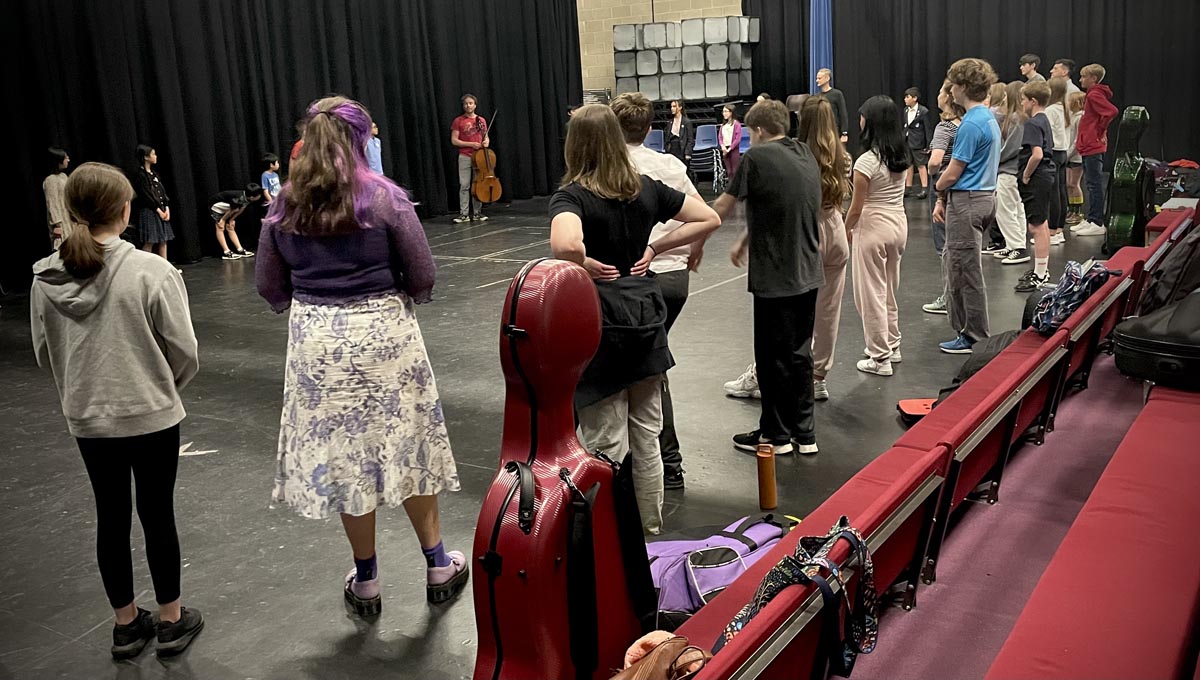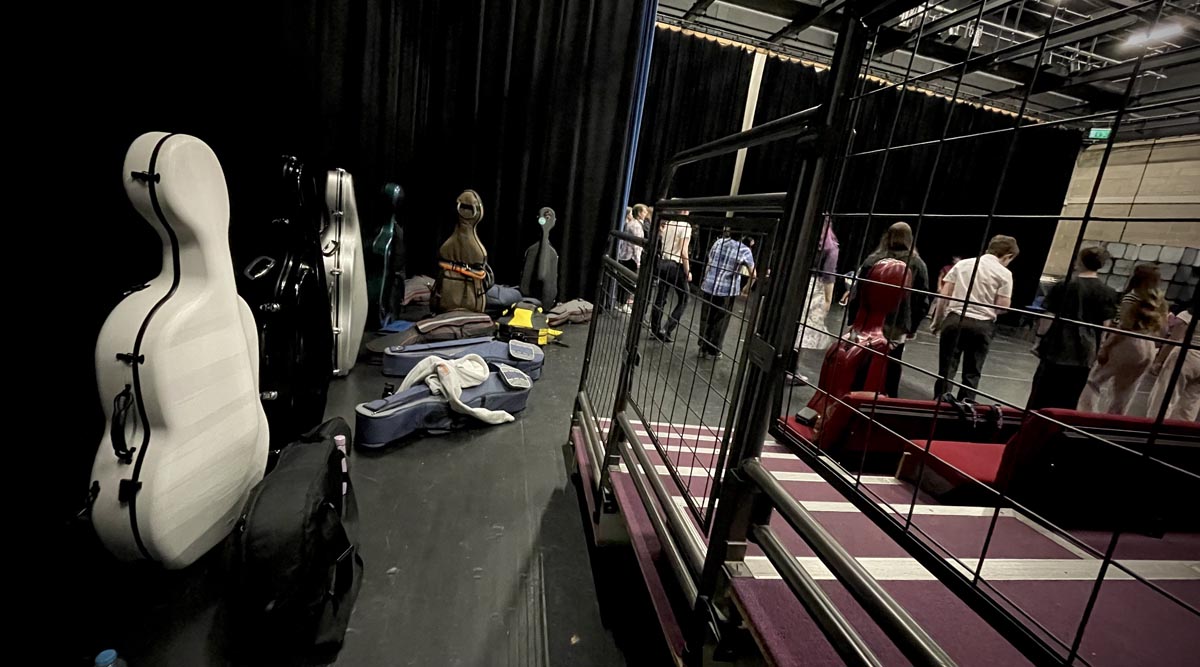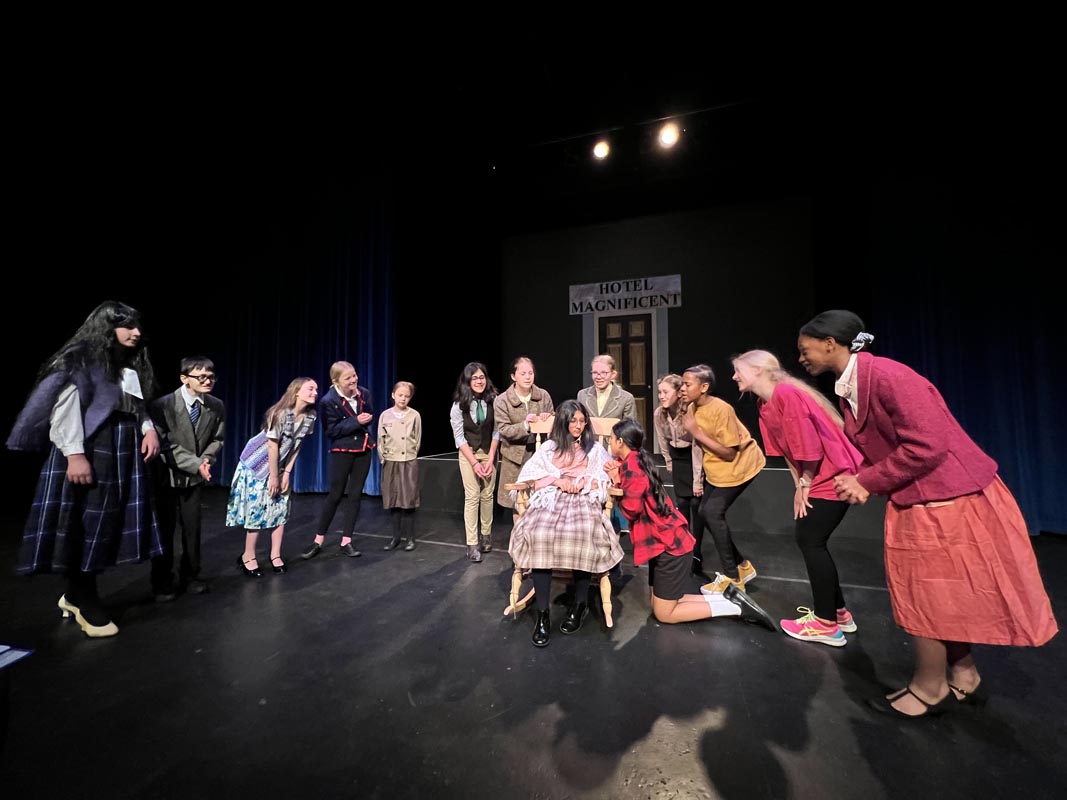Last week’s performance of Roald Dahl’s ‘The Witches’ by our Year 7 and 8 ‘Friday Drama Club’ had us in stitches.
It was great, well played and very funny. When the dry ice billowed, strobe lights pulsed – better than any 80’s Wham video – and our young actors magically turned into mice (fell backwards off the stage, giggling, onto mattresses as multiple clockwork mice scurried forth from under the curtain), the Headmaster and large audience belly laughed for Britain.
Still smiling from such rich entertainment, the next day I took a proper peek at the GCSE exam artwork, now examined and moderated, in our classrooms. The scope and depth of the work is quite something. The execution is outstanding for such young artists. I could have loitered longer. As it is, I think that Karen, my PA was close to sending out a search party.
And tonight, as I write, we will soon be hosting a Cello Gym in concert with Matthew Sharp, Nick Stringfellow and Lucy Samuels from the Royal Birmingham Conservatoire. Described as “a high-energy, fast-paced and exciting opportunity for any cellist from Grade 2 up to Diploma level to participate in a unique cello workout with a massed cello ensemble” this is one of many public benefit collaborations into which BGS enters. Tonight, young musicians from a wide range of schools in our region will have the opportunity to play arrangements from Bach to Coldplay and enjoy performances from multi award-winning professional cellists – we can’t wait!
Meanwhile, at this mid-point in the Bradford Grammar School summer term, music practices and rehearsals tick along in the background for forthcoming recitals, summer concerts, speech days and prizegiving ceremonies in both the Junior and Senior Schools, and also for various graded music exams (as we know well in the Hinchliffe household).
Clearly the arts are valued and thriving at BGS. They are a vital part of a rich, balanced, liberal and empowering curriculum. However, we have long heard reports of undervaluing of the arts in many of our nation’s schools, a worrying trend which The Guardian newspaper reminded us of earlier this year:
“English state schools are facing a creativity crisis. Since 2010, enrolment in arts GCSEs has fallen by 40% and the number of arts teachers has fallen by 23%. This shift is most pronounced among state schools in deprived areas, where pupils are far less likely to sing in a choir or play in an orchestra. Meanwhile, private schools have invested substantial resources in art and music provision, according to research from Warwick University. This depressing trend is part of a wider and self-reinforcing pattern. As fewer state students have the opportunity to engage with arts or music, fewer go on to study these subjects at A Level or university. The risk is that arts subjects will be restricted to a privileged few, shrinking the cultural horizons of everyone but the elite.”
To be clear, everyone wants to see a broad and adequately funded education, embracing the arts, humanities and sciences, in all kinds of schools for all children. We could discuss various inferences in the Guardian piece. But for now, I’ll gently suggest that in the context of the article, tonight’s music event at BGS has obvious benefit and that partnerships, between schools, universities and various private and public bodies, sharing expertise and resources, have the potential to enrich the lives of many young people. Let’s hope that conditions prevail to sustain and develop such activity.
Opportunities for creative expression are essential for healthy living. Such opportunities are not the sole preserve of the arts though. Referencing my own (increasingly distant) past as an Earth scientist, we note the success of Geophysicist Dr Bernard Chouet who predicted volcanic eruptions utilising his musical training and understanding of resonance, which enabled him to interpret hidden signals in traditional seismographs. Closer to my own specialism, glaciologist Professor Doug Benn, with whom I share a PhD supervisor, applied techniques from civil engineering to demonstrate that ice sheet margins in Patagonia were once able to bulldoze stiff frozen sediments, a creative resolution that explained some puzzling and previously unexplained landforms. Intersubjectivity and creativity are clearly at play here, qualities that schools must be enabled to foster in our pupils.
Partnerships, such as the one we are engaging in this evening at Bradford Grammar, are a powerful way to achieve such ends.
And with that said, I’m off to join the company of more than 40 children from many local schools, members of the Royal Birmingham Conservatoire and my music colleagues in our Hockney Theatre. A very special collaboration in prospect.
“Opportunities for creative expression are essential for healthy living.”


